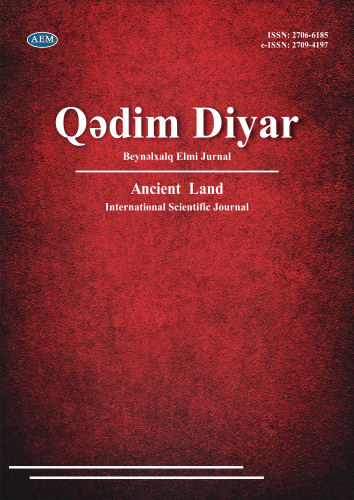DOI: https://doi.org/10.36719/2706-6185/34/132-137
Əli Əhmədov
Bakı, Azərbaycan
ali.v.ahmadov@gmail.com
VERGİTUTMANIN TARİXİ: NƏZƏRİYYƏLƏRİ,
VERGİ NÖVLƏRİ VƏ VERGİ ELEMENTLƏRİ
Xülasə
Vergilər tutulmadan heç bir dövlət normal şəkildə mövcud ola bilməz. Digər tərəfdən, vergilər- dövlətin əlamətlərindən biridir.
“Vergi” termininin mürəkkəb strukturu ilə bağlı XIX əsrdə rus iqtisadçısı M.M.Alekseyenko qeyd etmişdir: “Bir tərəfdən vergi-bölgü elementlərindən biridir, qiymətin tərkib hissələrindən biridir. Digər tərəfədən, vergilərin təyin edilməsi, bölüşdürülməsi, toplanması və istifadəsi dövlətin funksiyalarından biridir”.
Vergi və ictimai mülkiyyət formaları arasında əbədi qarşıdurmanın həllindən ötrü verginin hüquqi xarakteristikası xüsusi əhəmiyyət kəsb edir.
Vergilər nəzəriyyəsinin kökləri XVII əsrin iqtisadi məqalələrində özünə möhkəm yer etmişdir. Məhz o zaman vergi neytrallığı görkəmli ingilis alimi Smitin, eləcə də iqtisadçı Rikardonun diqqət mərkəzində idi. Bununla yanaşı, etiraf etmək lazımdır ki, vergilər nəzəriyyəsinin əsasları çox daha əvvəllər, hələ XVII əsrdə görkəmli alim Pettinin rüsumlar və vergilər haqqında traktatında qoyulmuşdur. Məhz onun yaradıcılığında həmin ideyalar və müddəalar səsləndirilmiş, daha sonra tam iqtisadi nizam-intizamın əsasını təşkil etmişdir.
Klassik vergilər nəzəriyyəsi məsrəflər və əmək qiymətləri arasındakı əlaqəni tədqiq edən tədqiqatlara əsaslanır. İngilis iqtisadçı Smit də məhz belə etdi, qiymətlərin təkcə əmək məsrəflərinə deyil, həm də torpaq rentasına, kapitala faizə və mənfəətə əsaslanmasını əsaslandırdı.
Açar sözlər: vergi, vergi nəzəriyyələri, vergilərin tənzimlənməsi, vergi elementləri, vergi islahatları
Ali Ahmadov
Baku, Azerbaijan
ali.v.ahmadov@gmail.com
History of taxation: theories, tax types, and tax elements
Abstract
No state can exist normally without taxes. On the other hand, taxes are one of the signs of the state.
Regarding the complex structure of the term “tax” in the 19th century, the Russian economist M.M.Alekseyenko noted: “ On the one hand, tax is one of the elements of distribution, one of the price components. On the other hand, the determination, distribution, collection, and use of taxes is one of the functions of the state”.
The juridical characterization of the taxes is of particular importance because of the resolution of the permanent installation bet private and public forms of property.
The roots of the tax theory were firmly established in the economic articles of the 16th century. It was that tax neutrality was the focus of attention of the eminent English scientist Smith, as well as the economist Ricardo. At the same time, it should be admitted that the foundations of the theory of taxes were laid much earlier, in the XVII century, in the treatise on fees and taxes by outstanding scientist Petty. It was in his work that ideas and provisions were voiced, and later formed the basis of a complete economic discipline.
The classical theory of taxes is based on research that examines the relationship between costs and labor prices. The British economist Smith did that, justifying prices based not only on labor costs, but also on land rent, interest on capital, and profıt.
Keywords: tax, theories, tax regulation, tax elements, tax reforms

